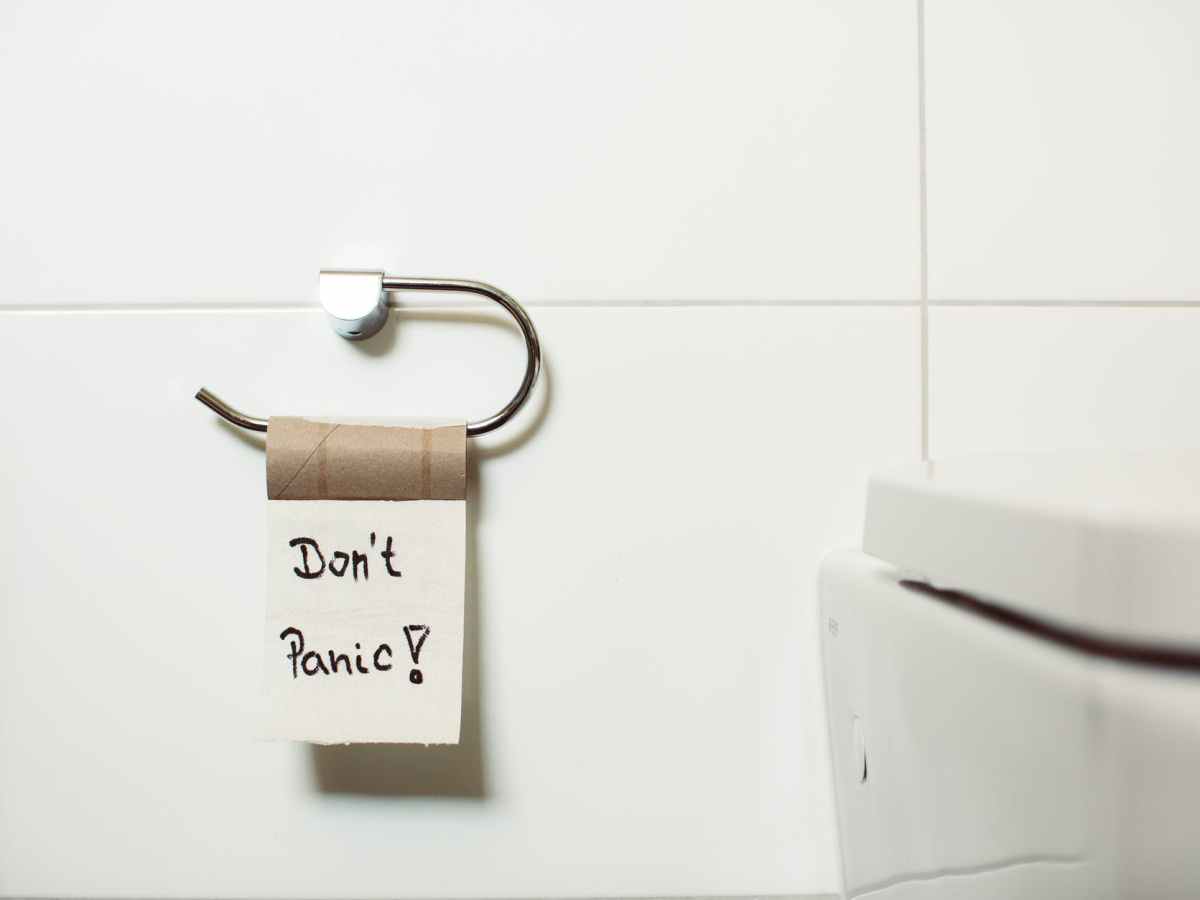Have you ever had patient exercising during your treatment session and taken their blood pressure only to find that is has shot up pretty high? They didn’t have symptoms of high blood pressure so you rested them and it came right back down. But, then you find that it keeps happening… What does this mean? Are they just intolerant to exercise due to deconditioning? Not necessarily. Exercise-induced hypertension can happen even in healthy individuals. There have been questions for several years about what exercise-induced hypertension means, and the answers are becoming clear.
So what is a normal blood pressure response to exercise?
We expect systolic blood pressure to rise about 20-60 mmHg during exercise, but this varies from patient to patient and is based on symptomology. It is fairly standard to see a rise of 8-10mmHg per MET of exercise, which eventually plateaus at peak activity level. A better cut off number is 180mmHg. Diastolic blood pressure, however, we need to keep an eye on. We do not want diastolic blood pressure to rise greater than 10 mmHg with activity.
Blood pressure can also drop with exercise, which is actually the long term goal of using exercise to manage hypertension. However, too much of a drop and this does indicate activity intolerance, especially when it drops in conjunction with a drop in heart rate. When blood pressure significantly drops in response to exercise, it can also be an indicator of future cardiovascular events. If systolic blood pressure drops are 10mmHg or more, it is an absolute red flag and any exercise or activity must stop. More of a drop than that can indicate severe active pathology like an active infarction or significant reduction in cardiac output. However, dehydration must also be considered, especially when the patient has diuretic medications on board. We talk about this more in this post.
What is Exercise-Induced Hypertension?
Also known as Exercise HTN, Exaggerated Blood Pressure Response to Exercise (EBPRE), or Hypertensive Response to Exercise (HRE). Exercise-Induced hypertension is an apparently ‘normal’ resting BP (<140/90 mm Hg) but excessively high exercise BP. Specifically, a systolic BP of ≥210 mm Hg for males and ≥190 mm Hg for females and, although less common, a diastolic BP ≥110 mm Hg for both males and females at any exercise workload. It is found in 18% of normotensive people, as much as 40% of hypertensive people, and in more than 50% of people with Type 2 Diabetes Mellitus.
Exercise-induced hypertension can also be defined as a blood pressure greater than the 90th percentile or normal during moderate intensity workload. You can view a table of what is considered 90th percentile of normal blood pressure during exercise here:
Exercise-induced hypertension may be indicative of an early phase of essential hypertension or pre-hypertension, indicates poor left ventricular adaptations and function, and may also be an indicator of poor hypertension control. Exercise-induced hypertension is associated with a significantly higher risk of cardiovascular events and mortality due to these events, even when present in otherwise healthy people without other risk factors.

What causes exercise-induced hypertension?
So many things…
- Metabolic conditions such as diabetes, metabolic syndrome, or high cholesterol, and any other conditions that lead to insulin resistance, vascular stiffness, or atherosclerosis.
- Conditions that impair systemic vasculature such as systemic inflammation. Several lab values have been associated with abnormal blood pressure responses to exercise, most of which are markers for inflammation:
- C-reactive protein
- Albumin-creatinine ratio (kidney function marker)
- Interleukin-6
- Large artery wall stiffness, such as in the aorta, femoral, or brachial arteries. Stiffness in the large arteries does not allow for proper compliance adjustments when volumes of cardiac output increase to accommodate exercise.
- Neurohormonal Vascular Control impairments, such as with traumatic brain injuries or neurodegenerative processes (even just aging). The neurovascular dynamics in response to exercise come primarily from a memory mechanism, not from peripheral changes due to exercise. This is because exercise is an active choice. Peripheral changes due to exercise (from chemoreceptors and mechanoreceptors) will inform these memory responses and further adjust the vasculature as needed. But the initial response is central. If those parts of the brain that hold these memories for how to respond to an increase in activity are damaged, blood pressure could rise unchecked until peripheral responses can catch up. (My inner nerd really came out in this one… I was completely entranced in learning about this!)
- Impaired hemodynamics. We will elaborate a little more on this later in the post but, generally, if your are not hemodynamically stable, your blood pressure response to anything is going to abnormal.
What else does the research say?
Although the risk for Exercise-Induced Hypertension is greater in males, it seems to indicate a higher risk of future medical problems for women. An article written in 1985 regarding hypertensive response to exercise in women was recently updated with new information regarding the effects of this phenomenon on women. The authors found that women are at increased risk for heart failure with preserved ejection fraction (HFpEF) largely due to higher prevalence of arterial and cardiac stiffening. The authors also found several pre-clinical indicators of pathology based solely on the exercise blood pressure response.

In a large longitudinal study, a 36% increase was found in the rate of cardiovascular events and mortality in individuals with an HRE at moderate exercise intensity. In addition, for every 10mmHg rise in systolic blood pressure with moderate intensity exercise, a 4% increase in the risk for cardiovascular events was present. Moderate intensity exercise was defined as stage 1 or stage 2 of an exercise test, OR the intensity of normal daily activities. So, these authors found that just the activity of a normal day was enough to illicit hypertensive responses in healthy people who experienced exercise-induced hypertension.
And here is where things REALLY get weird…
If you are working with patients who have known underlying cardiovascular pathology (NOT hypertension), it is actually PROTECTIVE for them to have an exaggerated blood pressure response to activity! Studies have shown that this is actually an adaptive response of the cardiovascular system to maintain myocardial function (Remember that Frank-Starling Principle we talked about?). When I was researching all of this I kept thinking, “what is this magic?” But as I thought about it, it makes sense because higher pressure helps maintain patency of the coronary arteries to promote improved perfusion for increased workload.
As Physical Therapists, we are the frontline.
The first step? Screening. Dr. Severin and his crew stated, “It is our ethical duty to screen.” We have the tools and the knowledge to screen people for hypertension and should do so every chance we get. To be honest, we typically can tell who is at really high risk for hypertension with a glance at their chart, and we can typically tell who really isn’t at risk for hypertension in the same way. But, what about all those people in between? And what about those completely healthy people who demonstrate exercise-induced hypertension? We have to screen.
“Exercise BP response may be an inexpensive screening tool to identify women at highest risk for developing future HFpEF.”
Sarma, et al. (2020)
Another study found that, in people at risk for hypertension who had normal resting blood pressures and no exercise-induced hypertension, lifestyle modification was enough to significantly reduce the development of hypertension at 1 year post-intervention. However, if exercise-induced hypertension was already present, lifestyle modifications were not enough, and long term exercise had to be part of the intervention to reduce the risk.
“it seems mandatory to mutually promote early diagnosis/treatment of exaggerated blood pressure response to exercise in healthy subjects without hypertension and encourage physical activity in prevention, treatment, and control of all stages of hypertension.”
Calderone, et al. (2017)
A randomized controlled trial showed that 12 weeks of treadmill-based exercise training could improve both ambulatory and exercise BP measures in individuals with resistant hypertension (defined as uncontrolled BP despite the use of ≥3 antihypertensive medications, including a diuretic). Can you imagine? Being on 3 or more blood pressure medications at the same time and STILL having hypertension? I can see the orthostasis from here! I’ve actually had several patients in exactly this situation. Hopefully, people are able to attempt treatment of their hypertension with exercise and/or lifestyle modifications first, but let’s be honest, this rarely happens. Patients are almost immediately placed on ACE inhibitors and then eventually beta-blockers when they have hypertension in isolation. But, when the pharmaceutical route fails, it’s up to us.
“In fact, there is an the ample evidence in the literature that physical activity could positively affect endothelial function, arterial stiffness, neurohormonal response and finally blood pressure levels both in healthy men and in hypertensive patients and so should be considered a very important element in the prevention and management of cardiovascular disease.”
Calderone, et al. (2017)
Prescribing the appropriate intensity and time of exercise to be therapeutic for managing hypertension is essential. According to ACSM, people with hypertension should exercise at a moderate intensity (3-5/10 or 12-14/20 on the Borg Scales or 3-6 METs) aerobic exercise 5-7 days per week. In addition, they should also perform dynamic resistance exercise 2-3 days per week and flexibility exercise 2-3 days per week. A minimum of 30 minutes and maximum of 60 minutes per bout is sufficient, OR, if utilizing HIIT exercise, 10 minutes bouts. This is because regular aerobic exercise results in reductions in blood pressure of 5-7 mmHg among individuals with hypertension and these reductions translate to a reduced risk of CVD of 20-30%. You may need to start small and progress gradually to achieve this with your patients if they are more debilitated OR at a higher risk of cardiovascular event. BUT, the effects are dose-dependent, so if you don’t reach the therapeutic threshold, you won’t see results.
Exercise blood pressure should be measured at every patient treatment. The reality is, you are going to be the only person who even has the opportunity to measure someone’s blood pressure during exercise BEFORE they experience a cardiovascular event. You will be the only one who had the opportunity to detect exercise-induced hypertension before it manifests as something more treacherous. Take the opportunity because it could very literally save the life of the person in front of you.
How many people have you encountered that have exercise-induced hypertension? What were their clinical characteristics? Tell me in the comments!
Follow my blog for more!
References:
Caldarone, E., Severi, P., Lombardi, M., D’Emidio, S., Mazza, A., Bendini, M. G., & Leggio, M. (2017). Hypertensive response to exercise and exercise training in hypertension: odd couple no more. Clinical hypertension, 23, 11. https://doi.org/10.1186/s40885-017-0067-z
Dimeo F, Pagonas N, Seibert F, Arndt R, Zidek W, Westhoff TH. Aerobic exercise reduces blood pressure in resistant hypertension. Hypertension. 2012;60:653–658. Retrieved from https://pubmed.ncbi.nlm.nih.gov/22802220/
Kim, D., & Ha, J. W. (2016). Hypertensive response to exercise: mechanisms and clinical implication. Clinical hypertension, 22, 17. https://doi.org/10.1186/s40885-016-0052-y
Le, V., Mikitu, T., Sungar, G., Myers, J., Froelicher, V. (2008). The Blood Pressure Response to Dynamic Exercise Testing: A Systematic Review. Progress in Cardiovascular Diseases. 51(2):135-160. https://doi.org/10.1016/j.pcad.2008.07.001
Mayo Clinic. (2019). Exercise: A drug-free approach to lowering high blood pressure. Retrieved from https://www.mayoclinic.org/diseases-conditions/high-blood-pressure/in-depth/high-blood-pressure/art-20045206
Sabbahi, A., Arena, R., Kaminsky, L. A., Myers, J., & Phillips, S. A. (2018). Peak Blood Pressure Responses During Maximum Cardiopulmonary Exercise Testing: Reference Standards From FRIEND (Fitness Registry and the Importance of Exercise: A National Database). Hypertension (Dallas, Tex. : 1979), 71(2), 229–236. https://doi.org/10.1161/HYPERTENSIONAHA.117.10116
Sarma, S., Howden, E., Carrick-Ranson, G., Lawley, J., Hearon, C., Samels, M., Everding, B., Livingston, S., Adams-Huet, B., Palmer, M. D., & Levine, B. D. (2020). Elevated exercise blood pressure in middle-aged women is associated with altered left ventricular and vascular stiffness. Journal of applied physiology (Bethesda, Md. : 1985), 128(5), 1123–1129. https://doi.org/10.1152/japplphysiol.00458.2019
Schultz MG, Hordern MD, Leano R, Coombes JS, Marwick TH, Sharman JE. (2011). Lifestyle change diminishes a hypertensive response to exercise in type 2 diabetes. Med Sci Sports Exerc. 43(5):764-9. Retrieved from https://pubmed.ncbi.nlm.nih.gov/20881877/
Schultz, M. G., & Sharman, J. E. (2014). Exercise Hypertension. Pulse (Basel, Switzerland), 1(3-4), 161–176. https://doi.org/10.1159/000360975
Severin, R., Sabbahi, R., Albarrati, A., Phillips, S. A., Arena, S. (2020). Blood Pressure Screening by Outpatient Physical Therapists: A Call to Action and Clinical Recommendations. Physical Therapy. 100(6):1008–1019. Retrieved from https://doi.org/10.1093/ptj/pzaa034
Weiss, S. A., Blumenthal, R. S., Sharrett, A. R., Redberg, R. F., & Mora, S. (2010). Exercise blood pressure and future cardiovascular death in asymptomatic individuals. Circulation, 121(19), 2109–2116. https://doi.org/10.1161/CIRCULATIONAHA.109.895292
WHO. (2020). What is Moderate-intensity and Vigorous-intensity Physical Activity?https://www.who.int/dietphysicalactivity/physical_activity_intensity/en/
Zaleski, A. (2019). Exercise for the Prevention and Treatment of Hypertension – Implications and Application. American College of Sports Medicine. Retrieved from https://www.acsm.org/blog-detail/acsm-certified-blog/2019/02/27/exercise-hypertension-prevention-treatment
Follow @DoctorBthePT on Twitter for regular updates!





2 thoughts on “Exercise-Induced Hypertension”